
 
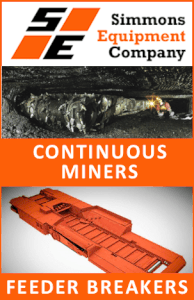



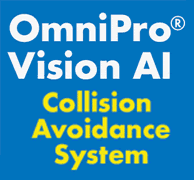




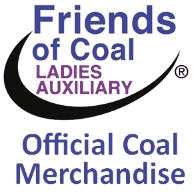

|
Signature Sponsor


August 12, 2024 - Introduction: Understanding the New Regulations on Respirable Crystalline Silica (RCS) Respirable crystalline silica (RCS) is classified by the International Agency for Research on Cancer (IARC) as a human carcinogen.[1] Occupational exposure to RCS results in adverse health effects and increases risk of death. Adverse health effects include silicosis (i.e., acute silicosis, accelerated silicosis, chronic silicosis, and progressive massive fibrosis), nonmalignant respiratory diseases (e.g., emphysema and chronic bronchitis), lung cancer, and kidney disease. Each of these chronic irreversible effects is disabling and/or fatal. Occupational exposure to RCS at mines occurs from dust generated during mining activities, such as cutting, sanding, drilling, crushing, grinding, sawing, scraping, jackhammering, excavating, and hauling of materials that contain silica. Regulatory reductions in RCS exposure in the workplace started in 2016 when the Occupational Safety and Health Administration (OSHA) established a new Action Level (AL) of 25 ug/m3 and Permissible Exposure Limit (PEL) of 50 ug/m3 for RCS for the construction industry. Two years later, the same exposure limits were implemented by OSHA for General Industry and the Maritime Industry. This year Mining Safety and Health Administration (MSHA) has followed suit. Depending on mining activities companies/facilities will have one-year (coal mining (CM) operations) or two years (metal and nonmetal (MNM) operations) to complete exposure monitoring of workforces to determine compliance with the new AL of 25 ug/m3 and PEL of 50 ug/m3 for RCS dust. In this article, we will identify highlights of the new standard and discuss details for exposure monitoring activities found in MSHA’s new Lowering Miners’ Exposure to Respirable Crystalline Silica and Improving Respiratory Protection [2] regulations effective as of June 17, 2024. The following information may be of particular interest to mining operators and Environmental, Health and Safety professionals in the mining industry. Questions to be addressed include:
Highlights of the New MSHA RegulationsThe new MSHA regulations have several impactful requirements. In the Federal Register publication, the Agency identified the following highlights of the new standard:
RCS Exposure MonitoringThe new standard establishes sampling methodology and dictates what exposure data can be utilized to compare worker exposures to the new AL and PEL. Under the final rule, “MSHA requires mine operators to use respirable-particle-size-selective samplers that conform to the ISO 7708:1995 standard to determine compliance with the PEL.” While MSHA identified two specific types of samplers in the proposed rule, cyclone and elutriator type samplers, these are not the only acceptable sampling devices that can be used to conduct sampling for RCS under this rule. MSHA clarifies that under this final rule, any sampling device conforming with the ISO 7708:1995 particle size selective criteria for respirable dust samplers are acceptable, even if the sampler is not specifically mentioned in the list of examples found in the proposed rule. Under the final rule, Parallel Particle Impactor (PPI) samplers (not listed on the list of examples) commonly used to monitor RCS in OSHA regulated communities would be acceptable. One other significant change requires employers to collect new air sampling data for a representative fraction of miners expected to have the highest exposure to RCS. Employers may not rely on previous data to confirm workplace exposures to the new AL and PEL. MSHA's final rule requires mine operators to commence sampling by the compliance date in the final rule for each miner who is or may reasonably be expected to be exposed to respirable crystalline silica. New sampling data utilizing ISO conforming size-selective samplers will have to be collected to determine compliance. While the previously collected exposure data may guide prioritizing and planning the new sampling scheduling, historical data will not satisfy compliance requirements with the new exposure limits. Frequency of personal air monitoring is expected to increase under the new standard. Frequency depends on the results of the initial and subsequent sampling, as well as any subsequent changes within the mining operations. Initially, at least two sets of personal air monitoring data will need to be collected on miners. The first set must occur by the relevant compliance date for the CM and MNM mining industry, while the second set must occur within 3 months of the first set. After the first-time monitoring is completed, each operator will determine the next action based on results. If that result is below the action level, the mine operator will have to conduct the second sampling to confirm that exposures remain below the AL. If the results from both samplings are below the action level, no further sampling is required unless there are changes identified by periodic evaluations that may reasonably be expected to result in new or increased RCS exposures. The second-time sampling must be taken after the operator receives the results of the first-time sampling but no sooner than seven days after the prior sampling was conducted. If the monitoring identifies exposures greater than the AL but less than the PEL, MSHA requires mine operators to sample worker exposure again within three months of the previous sampling and to continue doing so until two consecutive samplings show exposure levels below the AL. Once the two consecutive exposures samples are achieved, monitoring can end. If changes to the process occur, new monitoring will be required to determine the impact of the changes on worker exposure. If monitoring identifies exposure greater than the PEL, MSHA requires the mine operator to notify MSHA of the over exposure, take immediate corrective actions to reduce exposure, and conduct corrective actions monitoring to determine if the corrective actions reduced exposures to or below the PEL. Once corrective actions reduce exposures below the PEL, monitoring will follow the greater than AL but less than PEL requirements. At least every six months after commencing sampling—or whenever ever there is a change in production, processes, installation or maintenance of engineering controls, installation or maintenance of equipment, administrative controls, or geological conditions—mine operators shall evaluate whether the changes may reasonably be expected to result in new or increased RCS exposures. Conclusion & How the New Respirable Crystalline Silica Regulations Can Impact Mining OperationsThese new regulations impact all mining operations across the country and will strain the monitoring and analytical industries to meet the demand. Forming strategic partnerships now will help you avoid citations and penalties in the future. Working with a Certified Industrial Hygienist, as well as industrial hygiene technician(s) that are experienced in using the size-selective sampling equipment, you can ensure your organization is well prepared for this new regulation. AcknowledgmentsWe would like to thank Bob Costello and Grant Quiller for providing insight and expertise that greatly assisted this research. [1] Silica, Some Silicates, Coal Dust and para-Aramid Fibrils IARC Monographs on the Evaluation of Carcinogenic Risks to Humans Volume 68 IARC 1997 [2] 89 FR 28218 publication date 04/08/2024 |
 


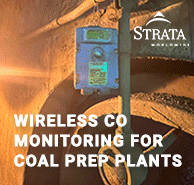




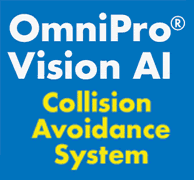


|